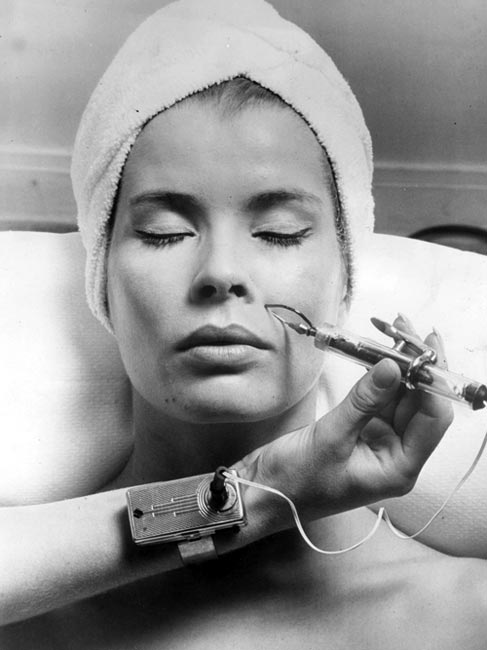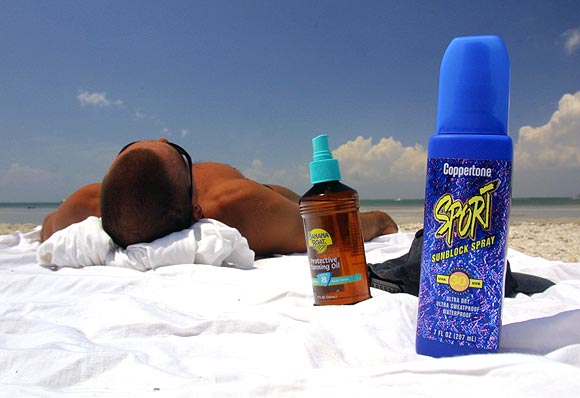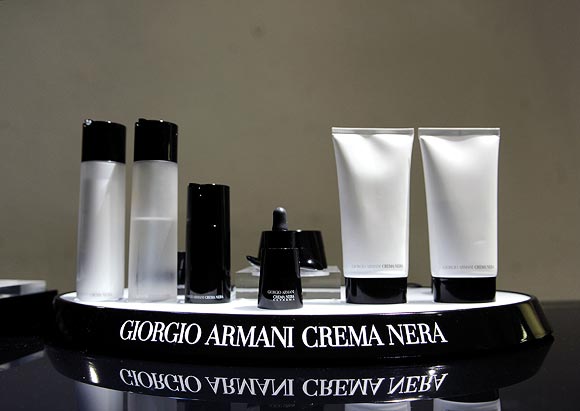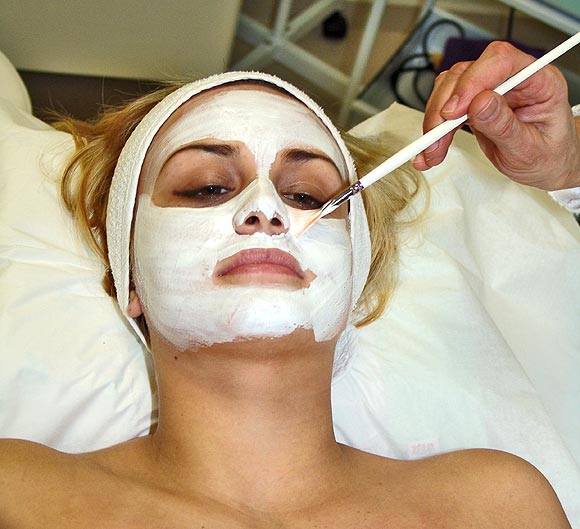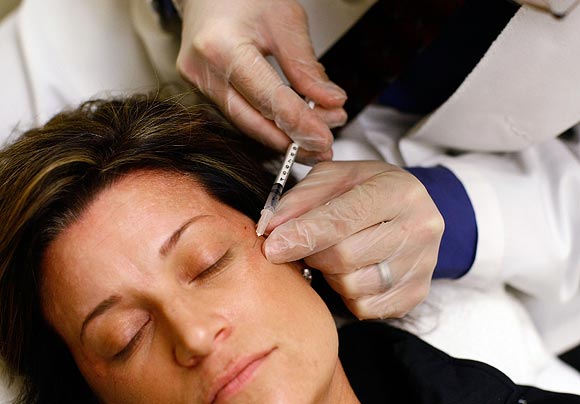This article was first published 12 years ago
Keeping wrinkles at bay: All you need to know
Last updated on: October 17, 2012 15:17 IST
Photographs: Keystone/Getty Images
Although wrinkles can signify wisdom, most people would rather not have them!
Skin ages all over the body, but much more so where there has been sun exposure. Most wrinkles appear on the parts of the body where sun exposure is greatest. These especially include the face, neck, the backs of the hands and the tops of the forearms.
- Wrinkles come in two categories: fine surface lines and deep furrows.
- Wrinkle treatments are in general much more effective for fine lines.
- Deeper creases may require more aggressive techniques, such as injection of fillers or plastic surgery.
What factors promote wrinkles?
- Smoking
- Light skin type (people with blue eyes and easily burned skin are more prone to sun damage)
- Heredity (some families wrinkle more)
- Hairstyle (some styles provide cover and protection against sun damage)
- Manner of dressing (hats, long sleeves etc)
- Occupational and recreational habits (farming, sailing, golfing, using tanning booths and so forth)
Photographs: Joe Raedle/Getty Images
- The main preventive measures we can take are to minimise sun exposure and not smoke.
- SPF numbers on sunscreen labels refer to protection against UVB radiation (shortwave ultraviolet light, the "sunburn rays").
- More and more sunscreens offer protection against UVA radiation (longer-wave ultraviolet light) as well.
- UVA rays are the ones you get in tanning salons; they may not cause immediate sunburn but do promote sun damage and skin cancer risk over time
Photographs: Rob Loud/Getty Images for Armani
There are several medical (topical medicines and creams) and cosmetic techniques available for reducing wrinkles.
They include both medical and surgical methods.
Medical treatment
Vitamin A acid: May produce redness and peeling at first, but discomfort can usually be minimised by lowering the cream's concentration or applying it less often, until the skin gets used to it.
Alpha-hydroxy acid: Has the same effect as above, and can also be remedied in a similar manner.
Antioxidants: Include vitamins A, C, and E, as well as beta-carotene. Such creams may provide a certain amount of sun protection as well as mild improvement of fine wrinkles.
Moisturisers: Reduce the appearance of fine lines.
Photographs: Sergio (Savaman) Savarese on Flickr/Wikimedia Commons
Glycolic acid peels and superficial peels can make a very slight difference in the intensity of fine wrinkles.
Deep peeling
- Deeper peels: These peels use ingredients like salicylic acid and trichloroacetic acid and penetrate somewhat deeper into the skin.
- Deeper peels do a better job of smoothing fine lines.
- The deeper the peel, however, the greater the risk of side effects, such as long-lasting pigment changes (changes in the colour of the skin) and scarring.
- Such peels do not require anesthesia. Mild sedation helps ease short-term but fairly intense discomfort.
Microdermabrasion
This refers to "sanding the skin" with a machine containing silica or aluminum crystals.
Microdermabrasion does not change skin anatomy, though it may make the face feel smoother.
Photographs: Dr Braun on Flickr/Wikimedia Commons
- Using instruments such as the carbon dioxide and erbium lasers, results similar to those of dermabrasion with greater reliability and precision.
- The laser is passed several times over the area to be treated until the peel reaches the middle of the dermis, the skin's second layer
- This helps stimulate the body's natural collagen synthesis (production), which plumps up sagging skin and wrinkles.
- Procedures may need to be repeated to maximise improvement. Skin takes a long time to heal (weeks to months) after resurfacing.
- In addition, this procedure, like dermabrasion, can cause permanent pigment changes and scarring.
Non-ablative laser resurfacing: Newer lasers attempt to stimulate collagen synthesis under the skin without peeling or damaging the epidermis.
Heat and radiofrequency: Another variation of non-invasive facial rejuvenation is to heat tissue using radiofrequency devises and infrared light sources.
Photographs: Win McNamee/Getty Images
Botox: Injection of botulinum toxin, the muscle poison, can paralyse muscles that produce the "frown lines" on the forehead, fine lines around the eyes, and other wrinkles. Botox is quite safe.
The muscle poison does not spread through the body to do damage elsewhere.
Fillers: Fillers are injected into the skin to increase volume and flatten wrinkles and folds. Hyalouronic acid and calcium hydroxy apatite have become popular, because their effect can last six to nine months, or even longer.
